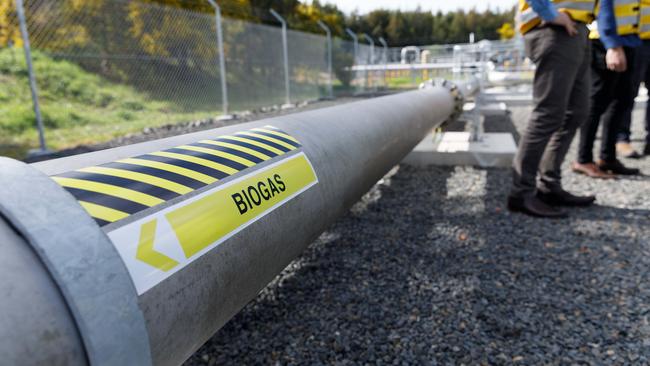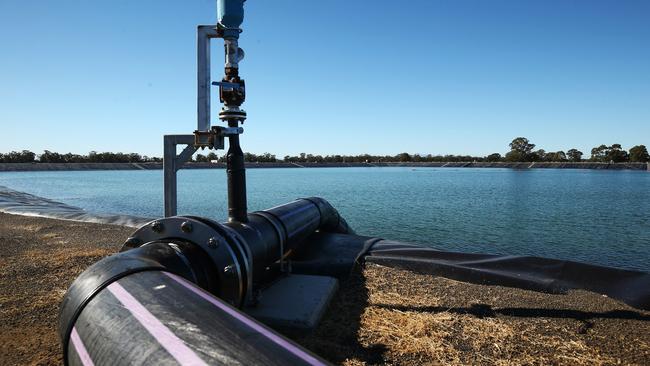Not investing in gas risks extending the burning of coal

Taking gas for granted will lead to a broken system regardless of your political stripes.
The silly season has delivered partisan, energy policy hyperbole and an avalanche of memes and one-liners around the themes of “unreliable renewables” and “too late nuclear”. The debate has flared as the triple-whammy of cost-of-living increases, perceived and actual challenges to renewable generation and transmission projects, and the Coalition proposal for a nuclear-powered future have all overlapped. That the Coalition comes to nuclear in 2024 after failing to talk seriously about it during a decade of power prior to the current parliament is an important, but separate issue.
The Australian Energy Market Operator’s Integrated System Plan (ISP) and CSIRO’s GenCost reports are weaponised in the energy policy wars. But there is one aspect of the ISP and GenCost that seems to have bipartisan support – that gas-powered-generation (GPG) will be important in the future National Electricity Market (NEM), even if for very different reasons in the ALP and LNP visions.
The ALP supports the 2024 ISP conclusion that “renewable energy … firmed with storage and backed up by gas-powered generation is the lowest-cost way to supply electricity” and “transition to a net zero economy”. But there is no agreed definition of what firming is, and utilities don’t build “a firming”, they build generation plant or storage with specific capacity and depth or duration (in the case of storage). Equally, the difference between “firming” and “back-up” is not clear, and in almost all respects they are interchangeable – perhaps back-up can be defined as what’s needed when the firming is no longer firm.
Regardless of definitions, AEMO and CSIRO are clear that storage needs flexible back-up from dispatchable generation, and that gas is the only viable technology capable of providing this back-up, at a grid scale, on the time frame of the ISP. The ISP step change scenario calls for between 12GW and 17GW of GPG capacity, running 5-10 per cent of the year as back-up peakers, and delivering about 5-10 per cent of total generation as wind and solar penetration increases and coal retires. Although aggregate use across the year remains in line with historical norms, the ISP forecasts that the peak-day gas demand will triple from historical levels from around 2035.

The ISP forecasts NEM emissions to drop to less than 5-10 per cent of today’s level and flatline at about 5 million tonnes a year from 2045 – this could be effectively called “job done” for decarbonising the NEM and there will almost certainly be higher merit order decarbonisation priorities in other sectors.
The LNP also sees a critical role for GPG during the nuclear build-out, and then presumably for peak demand needs once the nuclear fleet is online. The volume of GPG needed will depend on how the LNP sees Australia’s coal fleet being managed during a nuclear build-out.
Gas isn’t just important in the NEM to back up increasing amounts of variable renewable energy. In the Northern Territory, more than 80 per cent of electricity is from GPG. In Western Australia, GPG is included in the Reserve Capacity Mechanism and is the largest single source of electricity generation. South Australia uses GPG to back up wind and solar and has just closed consultation on its new Firm Energy Reliability Mechanism to encourage dispatchable capacity, which can include GPG. In Queensland, new GPG capacity can be added by government-owned companies to ensure energy security, for example the Brigalow Peaking Power Plant announced by CS Energy and the Labor government of the day in 2023.
Regardless of whether states invest in dispatchable generation through government-backed capacity mechanisms or chance the sentiment of the private sector as NSW and Victoria seem committed to, gas supply risk will become an increasingly important aspect of Australia’s energy security. Counter-intuitively, Australia must maintain a substantial gas export industry if we are to be able to meet the future peak supply volumes of GPG forecast in the ISP. It is already difficult to see how we’ll service peak daily volumes of the 3000+ terajoules per day that the ISP calls for even with the current, extensive fields and infrastructure that are primarily in service of LNG exports. Without a major export industry, it would be all but impossible to meet such a large peak-daily demand given the much lower steady-state domestic gas demand.
Some policymakers assume the Australian Domestic Gas Market Mechanism (ADGSM) will prevent domestic shortfalls, and indeed in the short term diverting gas production from already developed fields would achieve this. To be clear, the diverted gas would come from coal-seam-gas fields developed in Queensland, primarily to decrease risk of GPG shortfalls in Victoria and NSW – and it still won’t be enough without substantial infrastructure upgrades given current pipeline and southern gas storage constraints. Based on October 2024 LNG exports from Queensland, there’s about a 50 per cent chance that diverted gas volumes would otherwise have been headed to China as LNG. Chinese companies have invested tens of billions in Queensland as joint venture partners in developing gas for export as LNG, and these projects now supply about 20 per cent of China’s LNG imports, a material quantity for Australia’s largest trading partner.
The CSG developments in Queensland require annual investment of close to $4bn to maintain production around current levels. If the ADGSM is enacted, project owners may perceive it likely that the benefits of their ongoing investments will accrue to others and may, therefore, choose to decrease their investment. If investment decreases, production will begin to decline relatively rapidly and increase the risk of overall gas supply shortfall. The ADGSM may have material, unintended, negative consequences and the commonwealth and state governments must consider how to incentivise sufficient gas supply to avoid such a blunt intervention.
The risks of geopolitical and investment consequences are likely to be heightened by the fact that neither Victoria nor NSW has provided an investment setting for local gas supplies to be developed at sufficient scale since the Queensland CSG projects ramped up in the 2010s. Queensland gas development meets all its domestic supply needs as well as LNG exports. In winter 2024, gas flow from Queensland was at maximum pipeline capacity in support of the southern states. Without CSG and the associated LNG developments, the southern states would have been in an even more serious shortfall situation.
If gas supply sufficient to meet the east coast gas market and NEM needs isn’t available out to 2050 and beyond, the AEMO and CSIRO analysis that concludes that a high renewable energy system can be both reliable and low-cost is no longer valid. The importance of gas to AEMO’s future, low-emissions electricity grid can’t be overstated, and is much more important than the aggregate use of 5 per cent might suggest, as it is during that 5 per cent of time there are literally no other electricity supply sources available.
The long-term gas supply risk must be taken seriously by all policymakers – it is almost certain that new supply sources, or material imports, will be needed to keep gas supply secure for the decades it will be needed. Support from major banks and governments for the necessary investments required to ensure supply is not assured, but the investment should not be taken for granted. Stymying investment in gas supply, with well-intended policies to help avoid further emissions and climate change, may inadvertently make the NEM transition more reliant on coal extensions or even undermine the renewables-heavy path set out by AEMO and CSIRO.
Professor David Close is director of the University of Queensland’s Gas and Energy Transition Research Centre.
